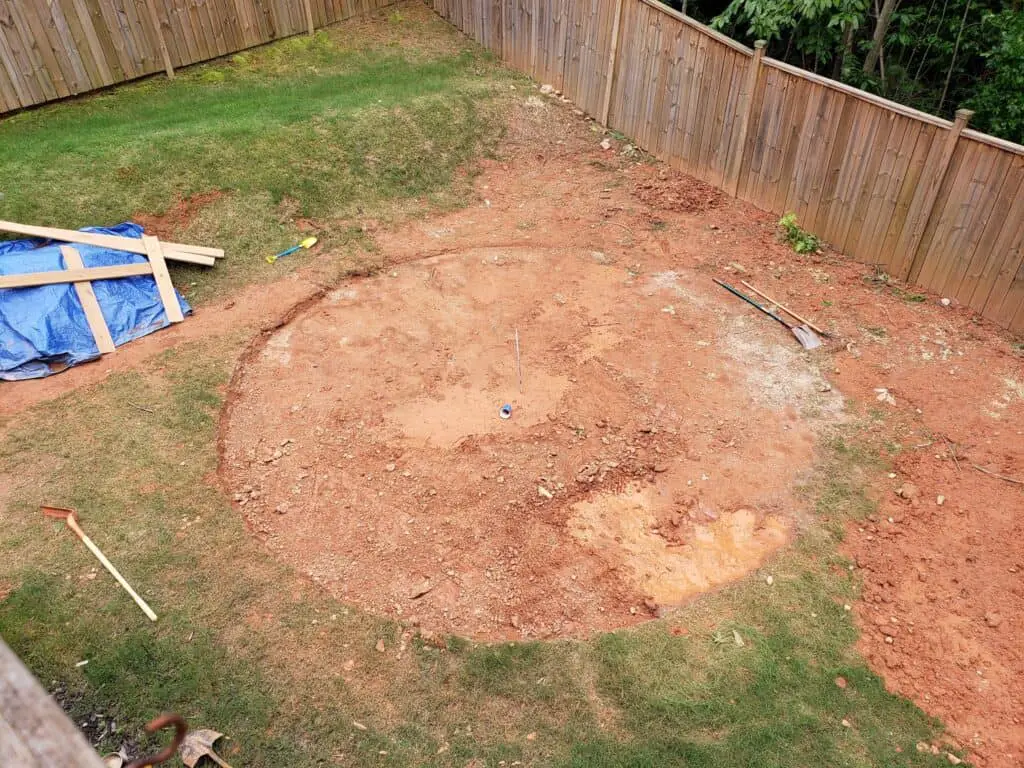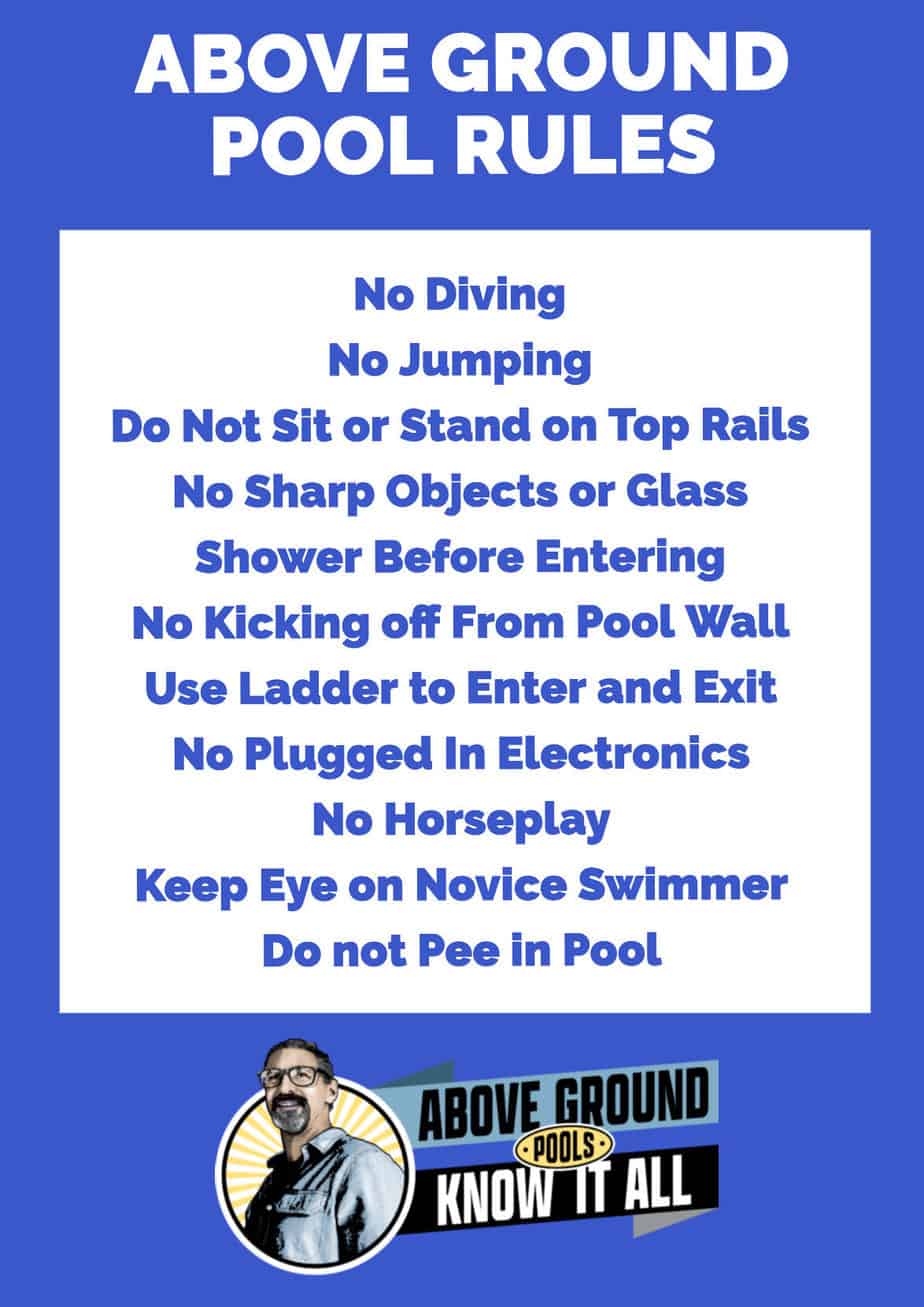
Here’s an obvious fact that many people don’t think about – Swimming pools have to be level. A lot of things in life don’t have to be very level, but a pool absolutely does. And it’s because of the water.
To determine how much grade your yard has for an above ground pool, mark out where the pool is going, run a string with a line-level attached to it over the area. Now measure the highest spot and the lowest spot of the earth in reference to the line. The difference between the two measurements is the amount of off-grade that area has.
NOT GETTING THE POOL SITE LEVEL IS THE NUMBER ONE MISTAKE DIYers MAKE WHEN INSTALLING AN ABOVE GROUND POOL.
This is especially true with the cheaper Intex/Coleman soft-sided pools. Some figure that since they only paid a few hundred bucks for the whole thing, that it should go up easily and just on top of the grass. Yeah no!
If an above ground pool is off more level than an inch, it starts to look visibly off but will still be OK. When it is off three inches or more, it won’t stay up very long when you fill it with water and you’ll have to take it back down and level the earth better.
THE BEST WAY TO MARK OUT WHERE YOU WANT THE POOL TO GO
People have all kinds of creative ways to mark where they want to put their pools. Here’s an easier way:
What you need:
A long skinny screwdriver
A tape measure (preferably a soft tape type)
Spray paint
1 Determine what size pool you have or want
2 Determine where you want to wall of the pool to go in reference to the house, fence, and/or any objects in the yard.
3 When you know where you want to wall of the pool to go, find the center point of the pool. Example: If getting a 24’ round pool, measure in 12’ from where you want the wall of the pool.
4 Once you have determined the center point of the pool site, attach your tape measure to the skinny screwdriver and poke the screwdriver into the earth at the center point.
5 With the tape attached to the screwdriver, measure out half the number of the size of the pool and add one foot. Example: For a 24’ round pool, measure out 12’ from the center point plus one foot or 13’. Note: If yard is extremely sloped, make the area one more foot bigger.
6 Now, use the spray paint and paint out the shape of the pool based on its size using the tape measure that is still attached to the screwdriver at the center point.
7 You now have a perfectly painted circle plus one foot extra all the way around. You now know exactly where the pool is going
If you are marking out an oval pool, use the same technique to determine the center point and spray out a rectangle one foot bigger than the pool. Consider too how wide the buttresses of the oval will stick out at the straight sides too.
WHEN YOU HAVE MARKED OUT WHERE THE POOL IS GOING PLUS ONE FOOT ALL THE WAY AROUND, DETERMINE THE GRADE
There are a few things that you can use to determine the grade of an area in the yard. The cheapest one is a line-level.
This is what you will need:
A line level
Nylon string
Two wood stakes or equivalent
Hammer
Tape measure
- Look at the painted out pool site and determine where the lowest and highest point of the area may be.
- Hammer one of the stakes into the ground at the highest point just outside of the painted area
- Hammer the other stake in the ground at the lowest point of the site just outside the painted area. Make sure the stake it sticking high enough off the ground to make a level line with the other stake.
- Tie the nylon string to the stake at the high point and run it out to the other stake
- Tie the other end of the nylon string to the low point stake and make it tight so it doesn’t sag. You now have a string running through the middle of your painted out pool site.
- Attach the line level to the nylon string somewhere close to the middle.
- Using the line level, make the nylon string level. Move the string up or down at the stakes so you can make the line perfectly level across the site.
- Now that the line is level, use the tape measure and measure down from the line to the highest point of the earth and record. Measure down from the lowest point of the earth and record.
- The difference between the measurement at the highest point and the low point measurement is your grade. Example: If the measurement at the high point of the pool site from the string is 4” and the measurement at the lowest point from the string is 10”, then the grade of the area is 6”.
WHAT DOES THE GRADE NUMBER MEAN?
If we use the above example and determine that the grade of the pool site is 6”, then that means in order to make the area level, you will have to lower the high area and/or raise up the low spot. In this case, you could dig down into the earth at the high area 6’ to meet the lowest level. Or you could raise the lower area up 6” to meet the high spot.
I usually like to split the difference somehow. If a pool site is 6” off grade, I usually will shave down the high part of the earth 3” and send it over to the low area which will bring it up 3”. This will create a level area.
CONSIDER THE GRASS
To install any type above ground swimming pool properly, you will have to remove all the grass and sod from the pool site first. Knowitall advice: Don’t try to skip this step of removing the grass by instead adding sand or something on top. Unless you want to install the pool twice.
When you remove the grass/sod from the pool site, it can change the grade. Not all sod comes out evenly. Some will be thicker in some areas. When you have removed the grass/sod, it may not be a bad idea to re-determine what your grade is. You will then know the real grade of the area.
DON’T LATER FORGET WHAT YOUR GRADE NUMBER WAS
The earth is a strange place to work with. It can be quite deceiving in many ways. You may have taken out all the sod and leveled the area, and it looks very level, but it’s not as off level as it said it was based on the line level. Don’t believe that.
If the line level (or any other fancier and accurate level) originally said it was off level 6”(the above example), then you can bet it didn’t change just because you added some sand of moved some earth from the high side to the low. Make sure your now level area has been adjusted from the grade it said to begin with.
Don’t let the earth fool you because when you install the pool and fill with water, that water level will be absolutely level whether you got the pool structure level or not. This is hard to explain but you’ll understand if you have to take the pool back down.
A FEW GRADING TIPS FOR A PROPER POOL INSTALLATION
1 Grade out a one foot bigger area than the pool size all the way around. Example: For a 24’ round pool, grade a 26’ circle.
2 Always remove all the grass/sod before grading.
3 As a general rule, go into the earth at the high side more than building up at the low side
4 If you can, grade the earth and install the pool during the off-season. It’s much easier to move earth around when it’s not so brutally hot
Since you may be installing your pool yourself, here are 32 tips to install an above ground pool.


This was the best advice ever. I’ve been winging it 4 years now putting my fourteen by forty two inch up. This year I am buying a eighteen foot by forty eight inch so i’m going to need this advice. My next question is once I level out the ground. I seem to have a million tiny rocks in my backyard. What can I put under the pool that is affordable to stop The rocks from coming through. A tarp just doesn’t get it. I’ve been using cardboard boxes to help but the clean up is disastrous. I’ve seen people put some type of thick cardboard Type insulation board or something under there but I don’t know about that or should I just get sand I want to start keeping the swimming pull up year round but I do not know how to winterize my pool without destroying it and now I’m going to. Be having a sand filter which I’ve never had before so this whole situation is giving me anxiety. And I only have a matter of a couple weeks to figure this out. Any help you could give would be greatly appreciated thank you Christina
Little rocks won’t cause any holes, but you do feel them. I assuming that’s what you want to avoid. I think the cheapest easiest thing to use is sand. Get enough to evenly spread out an inch or two of it. Just enough to not feel the rocks.